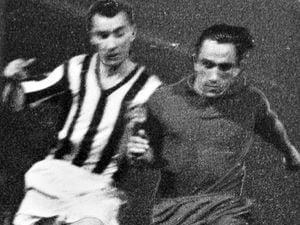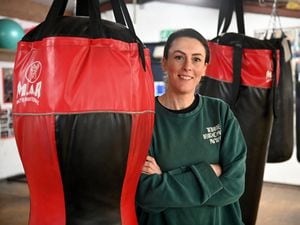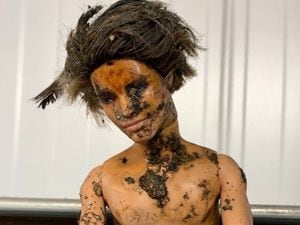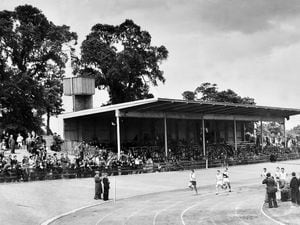Death of Diana: The day the nation mourned
The experience would have been the same in almost every household in the country.
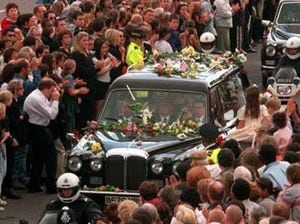
People woke up on a sunny Sunday morning, switched on the television or radio – and gasped in disbelief. Diana, Princess of Wales, who rivalled the Queen as the most famous woman in the world, had been killed in a car crash.
Was it really a quarter of a century ago? Most people remember where they were when they heard about the deaths of Elvis Presley or John Lennon. Older readers may talk about the death of John F Kennedy. But this really was on another level altogether. The nation was gripped by a collective sense of shock and grief. Thousands flocked to churches, public buildings or makeshift memorials to express their condolences for somebody they had never met.
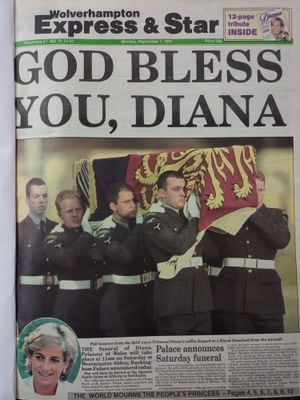
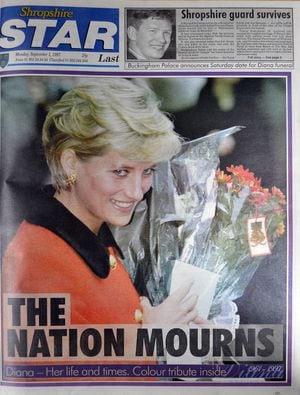
Diana's funeral at Westminster Abbey, six days after her death, drew approximately three million mourners and onlookers into central London, with large screens erected in Hyde Park and around the church. An estimated 2.5 billion people around the world watched the service on television, seeing her friend Elton John perform a reworked version of his classic hit Candle In The Wind, and a spontaneous outburst of applause at an emotional speech from Diana's brother Charles, Earl Spencer.
It also had a profound change on the way news was reported by the broadcast media. It led to the birth of the rolling news cycle, as TV schedules were torn up to be replaced by round-the-clock news updates.
Some of it bordered on poor taste. One well-known local broadcaster said he "couldn't get enough of the news coverage". Newspapers which days before had criticised Diana's campaigning against land mines were now praising her courage in speaking out. Princes William and Harry, then aged 15 and 12, were asked to make an appearance at Kensington Palace amid shrill calls from sections of the public, who wanted to see the Royal Family pay its respects.
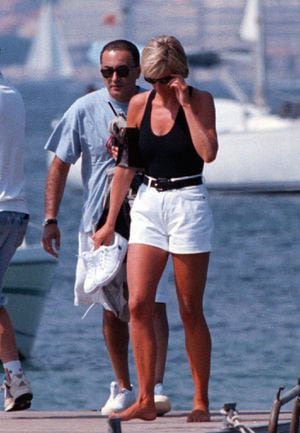
Diana had spent the days before her death with 'close friend' Dodi Fayed, the film-producer son of colourful business magnate Mohamed Al-Fayed. They had spent the previous nine days on the French and Italian Riviera aboard Mohamed Al-Fayed's yacht Jonikal, before taking a private jet from Sardinia to Paris. On August 30, 1997, Diana, 36, and Dodi, 42, were planning to spend the night at the Paris Ritz, which was also owned by Dodi's father, before heading to London.
The pair had supper in the hotel, but just after midnight they decided to head out to Mohamed Al-Fayed's apartment in nearby Rue Arsène Houssaye.
Dodi and Diana's friendship had attracted worldwide media interest, and the infamous Paris paparazzi were all clamouring for 'that' exclusive photograph. About 30 of them had assembled outside the front of the Ritz, and in an attempt to shake them off, a decoy car left the front of the hotel.
For a short while this succeeded in drawing out the majority of them, and Mohamed Al-Fayed's deputy head of security, Henri Paul, was instructed to drive Dodi and Diana out of a rear entrance of the hotel in a hired blue Mercedes S-Class. They were accompanied in the front passenger seat by Trevor Rees-Jones, a former paratrooper from Shropshire, who formed part of Al-Fayed's personal protection team. None of the occupants of the car was wearing a seatbelt.
After leaving the back of the hotel in Rue Cambon, and crossing the Place de la Concorde, they drove along the embankment road along the right bank of the River Seine, towards the Place de l'Alma tunnel.
At 12.23am, just three minutes after leaving the hotel, Paul lost control of the car at the entrance of the tunnel. First he struck a passing white Fiat Uno, the Mercedes swerving to the left of the two-lane carriageway before colliding head on with the 13th pillar supporting the roof of the tunnel. It then span around and hit the wall of the tunnel backwards, where it finally came to a stop. The car was reported to have been travelling at about 65mph, more than double the speed limit on the road. Witnesses described how photographers on motorcycles "swarmed the Mercedes before it entered the tunnel".
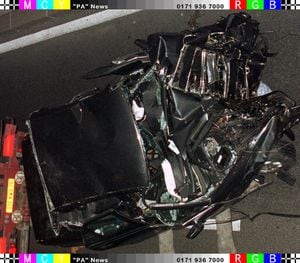
Police arrived within minutes, and an ambulance was at the scene at 12.35am, but Paul and Fayed were pronounced dead as their bodies were removed from the wreckage. Off-duty doctor Frederic Mailliez said Diana had no visible injuries, but was in a state of shock. After being removed from the car at 1am, she suffered cardiac arrest, but was successfully resuscitated. She was taken to the Pitié-Salpêtrière Hospital, but died at 3am.
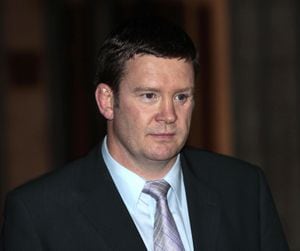
Mr Rees-Jones, 29, from Whittington, near Oswestry, also suffered serious injuries, and received a 10-hour operation to restore his jaw. The brother of Wolverhampton dentist, Gareth Rees, he spent more than a month in hospital before returning to the UK on October 3, when he was still only able to communicate by whispering or writing.
After waking William and Harry to break the tragic news, Prince Charles flew out to Paris with Diana's sisters Lady Jane Fellowes and Lady Sarah McCorquodale, returning at 6.45pm at RAF Northholt with Diana's body. The party was joined by Prime Minister Tony Blair, Defence Secretary George Robertson and Lord Chamberlain Lord Airlie, and the group watched in silence as eight bearers from the Queen's Colour Squadron of the RAF carried the coffin from the plane to a waiting hearse.
Dodi received a short private funeral at London Central Mosque the same day, in accordance with Islamic practices.
Five French photographers were arrested at the scene – two more were detained – and it was reported that one of the paparazzi had been beaten up by angry bystanders. Police seized 20 rolls of film which they hoped might provide valuable clues in finding the cause of the crash. It was reported that photographs of Diana's last moments were being touted around the world for more than £600,000.
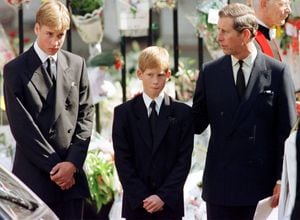
Anne-Laure Domenichini, a French journalist who was working at the Express & Star at the time, slept through a 3.45am phone call.
"My husband woke me with the news 'Get ready to go to conference. Lady Di has been badly injured in Paris, and Dodi is dead'," she recalls. "In my haze I though it was a bad joke."
Anne-Laure was quickly sent to Paris with photographer Eddie Brown, and remembers arriving to a city already swamped by tearful crowds.
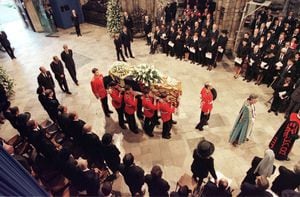
"Hundreds of flowers, candles and messages were spread at the foot of the Flame of Liberty sculpture," she says.
"The din of traffic usually rushing into the tunnel under the bridge could not be heard. The only clear yet muffled sound rising from the scene was of desperate sobs and quiet prayers."
Back in Britain, Buckingham Palace and Diana's home at Kensington Palace were besieged by mourners, and a sea of floral tributes piled up. Among those paying their respects was Andy Reeves, a 31-year-old punk rocker from Brownhills, near Walsall, who attended with his six-year-old son Billy.
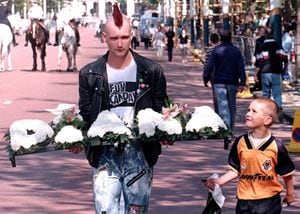
"She was the only real member of the Royal Family, she would do anything for anyone," said Andy, who laid a 4ft floral tribute while sporting a red mohican.
Closer to home, makeshift memorials appeared across the West Midlands, as well as the official books of condolences in public buildings.
In Wolverhampton, St Peter's Collegiate Church held an ecumenical service organised in partnership with Catholics and Methodists. Rector, the Rev John Hall-Matthews, said the church's three-month supply of candles had been exhausted in just three days.
"The outpouring of public grief is astonishing," said Mr Hall-Matthews.
Mervyn Wycherley, from Much Wenlock, spent 14 years working as the Princess's head chef.
Mr Wycherley, who was 46 at the time, had travelled around the world with Diana, and had also cooked for her at Kensington Palace.
"Wherever she and the Prince went, I travelled with them," he said.
"It is very, very sad, and she will be greatly missed."
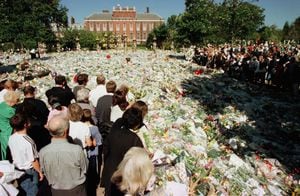
Nigel Tinsley, secretary of the Good Shepherd centre for the homeless in Wolverhampton, remembered the Princess visiting its base in Thornley Street.
"She showed a great deal of interest and had a wonderful way of putting the men at their ease," he said. "She was very good at talking to them one-to-one."
The Rev Michael Goss, vicar of St Thomas and St Luke's Church in Dudley, paid tribute to 'an outstanding personality'.
"A death in a road accident is a very raw kind of bereavement," he said.
"Questions must be asked about what caused this accident."
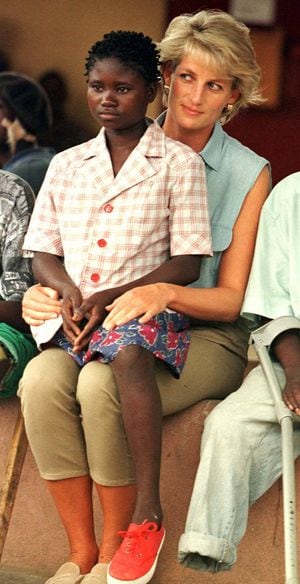
At St Francis's Church, in Laurel Road, Dudley, grandmother Pat Goodyear said Diana's death was a great loss to the country.
"I certainly shed a few tears this morning, and I saw a lot of others wiping their eyes in church," she said.
Rosemary Chapman, from Willenhall, recalled how Diana had sent her a basket of fresh flowers when her daughter Stephanie died, aged 11, from cancer.
She had kept the wicker basket in memory of her daughter, and said it would now also serve as a memorial to the princess.
"Stephanie idolised Di, and now they are together," she said.
Wolverhampton machete attack heroine Lisa Potts said she had seen Diana just two weeks previously while shopping in Wolverhampton.
"She said 'Hello', I was astonished," said Miss Potts. "I just can't believe she's dead."

